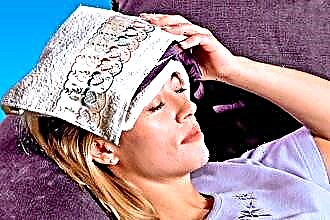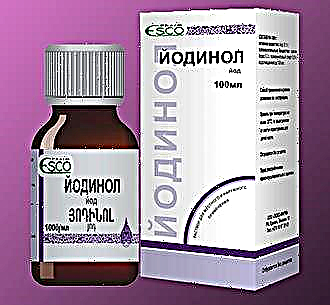As soon as a runny nose appears, we immediately think of a cold. The disease is not dangerous if it is not accompanied by hyperthermia and signs of intoxication. It is necessary to treat a runny nose during breastfeeding after consulting a doctor, because not all medications are allowed in this period.
 You can cope with the disease at home if you start treatment at the initial stage of the disease. Medications are prescribed taking into account the cause of rhinitis, the presence of allergies and concomitant pathology in a woman. The causes of the common cold include:
You can cope with the disease at home if you start treatment at the initial stage of the disease. Medications are prescribed taking into account the cause of rhinitis, the presence of allergies and concomitant pathology in a woman. The causes of the common cold include:
- allergens such as pollen, dust, fluff, smells of chemicals, perfumes, household chemicals, personal care products, food and medicines;
- infectious pathogens (viruses, bacteria). For a young mother, the most dangerous is infectious rhinitis;
- contaminated air;
- nerve strain, which can cause vasomotor rhinitis. Its development is due to a disorder in the regulation of the tone of the vascular wall, due to which the vessels are in an expanded state. This leads to swelling of the mucous membrane and the appearance of rhinorrhea;
- endocrine diseases associated with hormonal fluctuations;
- hypothermia (general or local - with prolonged inhalation of cold air);
- chronic infectious foci in the naso-, oropharynx, in which microbes are in an inactive state. Under certain conditions, they are activated and cause inflammation.
Clinical manifestations
A nursing mother's runny nose may be the only complaint or be related to symptoms of a medical condition such as the flu or allergies. The clinical picture of diseases depends on the cause of the pathology, therefore it may include:
- nasal congestion;
- rhinorrhea (discharge can be mucous or viscous, transparent or with a yellowish tinge);
- Difficulty nasal breathing;
- pain in the paranasal, glabellar, frontal area;
- hyperthermia;
- coughing;
- perspiration in the oropharynx;
- weakness;
- drowsiness;
- poor appetite;
- aches in muscles, joints;
- itchy skin and eyes;
- lacrimation;
- hyperemia of the conjunctiva;
- skin rash.
Prolonged exposure to an allergen can lead to the development of bronchial asthma, and the spread of infection from the nasopharynx is fraught with pharyngitis, otitis media, sinusitis and meningitis.
A runny nose goes through several stages, which differ in symptoms:
- in the first stage, there is redness, swelling of the nasal mucosa and the release of a large amount of watery mucus. A woman is worried about lacrimation, sneezing and rhinorrhea, which is difficult to stop;
- nasal discharge gradually becomes thicker and yellowish. At this stage, the main task of therapy is to ensure the normal outflow of snot, otherwise the risk of their accumulation in the paranasal sinuses increases;
- in the third stage, the volume of secretions decreases, and recovery occurs.
Usually, rhinorrhea lasts about 7 days, but with an allergic origin or the addition of a bacterial infection, a runny nose can persist for up to a month.
How to treat?
Treatment of a runny nose during breastfeeding is carried out in compliance with a certain regimen. It means:
- drinking plenty of fluids. Mom should drink at least two liters a day. It can be fruit drink, warm tea, milk, still water, compote or herbal teas. Adequate intake of fluid in the body allows you to accelerate the elimination of toxins, normalize temperature and replenish fluid losses with sweat and breathing;
- bed rest. It enables the body to recuperate and it is easier to transfer the disease, avoiding complications;
- regular airing and damp cleaning, which helps to reduce the concentration of infectious pathogens in the air and provide a good environment for the woman. The importance of air should not be less than 60%, especially during the heating season;
- healthy food. Eat plenty of fresh vegetables, fruits and herbs. You need to limit the use of fatty, spicy, fried foods, light carbohydrates, flour products and products with trans fats and dyes;
- lack of contact with allergens. Rhinorrhea will continue until the influence of the provoking factor stops;
- lack of hypothermia, the influence of a draft and contact with sick people.
A cold is not a contraindication for continued lactation. If rhinitis is not accompanied by severe hyperthermia and purulent complications, the baby continues to feed.
Breastfeeding ensures that protective antibodies enter the baby's body to build their own immunity and provide strong protection against infections.
Regular feeding avoids lactostasis and the development of mastitis.
Cold medicines
After a full examination, the attending physician prescribes medications that have a healing effect for a young mother and do not harm the child.
How to deal with a fever? A nursing mother should remember that to reduce hyperthermia, drugs based on Paracetamol or Ibuprofen can be used. Their action is aimed not only at reducing fever, but also at reducing pain and the severity of inflammation.
It is necessary to bring down the temperature upon reaching 38 degrees. For this, suppositories, suspensions or tablet forms (Ibufen, Paracetamol) are prescribed. If a woman is allergic to these medicines, you can use alternative methods:
 warm drink (tea, still water, unsweetened compote);
warm drink (tea, still water, unsweetened compote);- airing the room;
- rubbing with a solution of apple cider vinegar (50 ml per liter of water at room temperature). A moistened handkerchief can be applied to the forehead;
- warm shower.
Local treatment consists in the use of the following groups of drugs:
- vasoconstrictor drugs;
- antihistamines;
- hormonal medications;
- antimicrobial drugs;
- saline solutions;
- homeopathy.
It is allowed to treat a runny nose to a nursing mother with the help of vasoconstrictor drugs in a short course of up to 5 days, strictly observing the dosage. Exceeding the recommended dose is fraught with dryness of the nasal mucosa, systemic vasospasm in the mother and an increase in the likelihood of vasoconstriction in the child. During the period of breastfeeding, the following are allowed:
- Nazivin, Nazol - have a low risk of side effects. They penetrate into breast milk in a small volume, but can cause arrhythmias and increased blood pressure. The maximum course is 3 days;
- Nazol is absorbed in a minimum amount into breast milk without causing a systemic effect. It is used in small doses.
Among the approved antihistamines, Allergodil should be distinguished, which belongs to the second generation of drugs with an antiallergic effect. Penetrates into breast milk in small doses. Loratadine and Cetirizine are also permitted.
As for medicines, which include a hormonal component, they are prescribed in severe cases, when other drugs are powerless. Hormonal medications are addictive, so after using them, conventional antihistamines have no therapeutic effect.
Among the new generation of corticosteroids, it is worth highlighting Fliksonase, Nasonex. They are approved for use with hot water. They have a powerful anti-inflammatory and decongestant effect. Absorbed into breast milk in a minimal amount. It is recommended to use the spray immediately after feeding, which will reduce the concentration of the active substance to the permissible level.
Sometimes it is not possible to cure a nursing mother's runny nose with conventional drugs, so the question of prescribing nasal drops with antimicrobial action is being decided. These medicines include Bioparox and Polydex.
With the appointment of systemic antibacterial agents in some groups, breastfeeding may be discontinued.
Harmless treatment for rhinitis
Among the many drugs to combat rhinorrhea, homeopathic and herbal medicines are considered the safest:
- Pinosol - consists of natural, plant components (eucalyptus, pine and mint oils). The tool has an antibacterial, anti-inflammatory, moisturizing and mild vasoconstrictor effect. In addition, regeneration of the mucous membrane is stimulated and local blood circulation is improved. It is not recommended to use Pinosol in the early days of a viral illness. It must be used with caution in case of a predisposition to allergies, because there is a high risk of bronchospasm, Quincke's edema and allergic rhinitis. Pinosol is applied three times a day, two drops in each nasal passage. The duration of therapy is usually 5 days, but it can last up to 10 days;
- Delufen is a homeopathic remedy in the form of a spray. It has a complex anti-inflammatory, anti-allergic, protective effect, and also stimulates regenerative processes. The drug is prescribed for the treatment of rhinitis of various origins (bacterial, viral, allergic, vasomotor, chronic atrophic or hypertrophic). Quickly helps to relieve nasal congestion and rhinorrhea by reducing swelling and secretion. Delufen reduces the risk of purulent complications of rhinitis, reduces the manifestations of allergies (itching, sneezing, rhinorrhea). It is not addictive, can be used for a long course, reduces the negative effect of smoke, chemicals on the nasal mucosa. It is used two injections into each nasal passage three times a day. Viral rhinitis usually heals in a week, allergic rhinitis can take months.
Note that any medicines for the nose should be used after preliminary cleansing of the mucous membrane with saline solutions.
For this, Dolphin, Salin, Humer or No-salt are used. You can prepare a solution yourself by diluting 5 g of salt in warm water with a volume of 220 ml. Washing can be carried out 4-5 times a day for a long period of time, including for prophylaxis.
Folk recipes
How to treat a runny nose with folk remedies? What is used for this?
- lime tea with lemon, warm milk with butter;
- chamomile infusion and oil-based onion drops for nasal instillation;
- washing the nasal cavities with infusion of chamomile, sage, coltsfoot;
- inhalations with garlic and onions;
- aloe juice for nasal instillation (dilution 1: 5 with water);
- thermal procedures (allowed only in the absence of hyperthermia). This can be foot baths with mustard or warming the wings of the nose with heated salt in a bag.
Do not forget that close contact with a child increases the risk of infection by airborne droplets, therefore, when feeding, you need to use a disposable mask. It is recommended to temporarily reduce the time the sick mother spends with the child, and to give the grandparents an opportunity to remember their youth and nurse their grandson - this way it will be possible to combine business with pleasure.

 A cold is not a contraindication for continued lactation. If rhinitis is not accompanied by severe hyperthermia and purulent complications, the baby continues to feed.
A cold is not a contraindication for continued lactation. If rhinitis is not accompanied by severe hyperthermia and purulent complications, the baby continues to feed. warm drink (tea, still water, unsweetened compote);
warm drink (tea, still water, unsweetened compote); Note that any medicines for the nose should be used after preliminary cleansing of the mucous membrane with saline solutions.
Note that any medicines for the nose should be used after preliminary cleansing of the mucous membrane with saline solutions.

